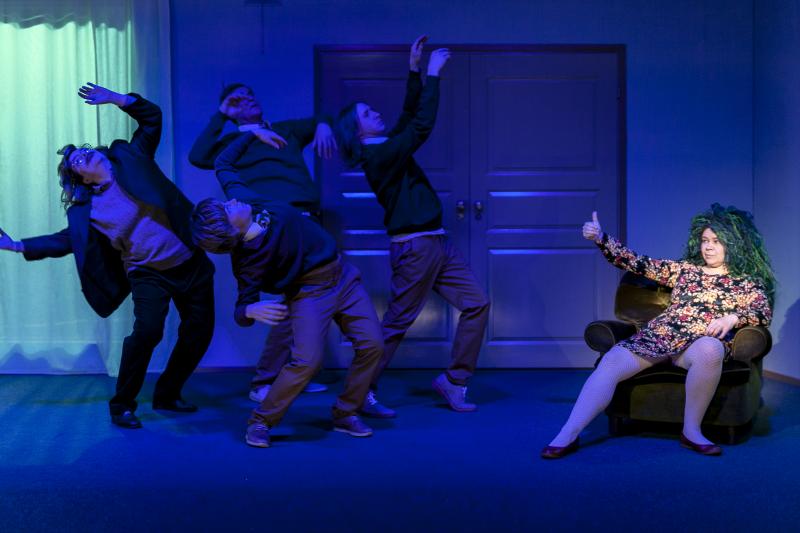Review: MEDUSA'S ROOM BY Q-THEATRE at The Finnish National Theatre
Script and Directing Saara Turunen.
On Stage: Katja Küttner, Elina Knihtilä, Tommi Korpela, Aksinja Lommi and Ylermi Rajamaa. Set Design Milja Aho, Lighting Design Ada Halonen, Sound Design Tuuli Kyttälä, Choreographer Janina Rajakangas, Costume Design Suvi Matinaro.
Alright. What can I say? Well, I definitely enjoyed.
Medusa's room is a fragmental performance and a play, which means that in the end, the scenes don't form a "whole" plot. The characters stayed somewhat the same and interacted in different settings. A lot of metaphors, strong and well paced scenic images, fine color design and delicate details. The set design was minimalistic, though cleverly changeable.

This is the kind of play that does not have the right nor wrong way of being interpretated. It leaves space for audience's imagination and offers a chance to reflect their own lives, learn and co-feel: shame, joy and anger. It looks at what is a Woman's place in this world, what kind of expectations the world has for Her and who might be the victim and who on the other hand might not be.
A little more of what I saw:
The Buckets. I think it was a symbol to the market economy that's advertised by sex, a woman's sporty body. The advertiser created a need to the queueing customer and when the customer got the product, she or he started making the same kind of moves as the dancing woman. Later in the play the customers crawled through the room, the buckets in their heads; they weren't able to see, hear or say anything. Nor wasn't Elina Knihtilä's male character who put the bucket in his head, refusing to do anything anymore to Katja Küttner's character's situation.

The Hen. She did all the work, never gaining any sincere thank you from her boss. She got her hands dirty, so to speak, and was left confused when she didn't get the earnings she deserved.
The Pig. Definitely my favorite part, deserving the applauds from the audience. The pig was a literal swine, a player, collecting women. Women that in the end didn't carry worth to him whatsoever. He just wanted to impress the audience.
I also remember how Elina Knihtilä's woman character got dressed up for the first time and three different men walked in. She tried to please them, hustle for them. I saw how we women try to please the men in our lives: our fathers, husbands, employers and gas-station cashiers.
Yes, there would be so much to write about, but I was so sucked into the moment that I didn't almost want to write notes at the same time. I wanted to experience, as I did.
The parts that I didn't personally enjoy so much were the singing and choreo-parts that yes, did pace the play itself quite nicely but were somewhat unnecessary and longish. Perhaps they gave time to us to think through the things we just experienced.
I'm glad I got the programme, it gained a lot of info of the thoughts of the writer and director Saara Turunen. It gave a broader view to the performance itself. But I feel that Saara Turunen spoke more passionately and clearly in the programme about her thoughts and feelings than she had actually managed to direct and transfer on stage. When I read the programme I expected more than what I saw, even though I wasn't disappointed of the end results nevertheless.
As I said before, I enjoyed. And my thoughts raced freely upon the themes the play successfully presented.
Article: Rosanna Liuski
Images: Aino Nieminen/AN and Milja Aho/MA
Reader Reviews

Videos
